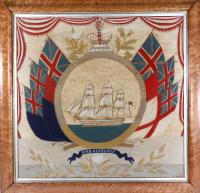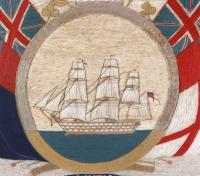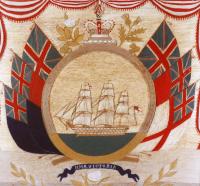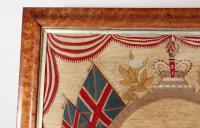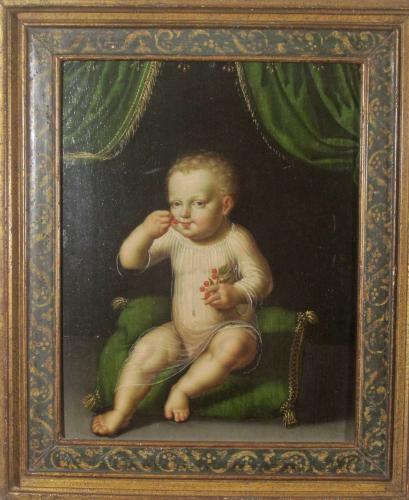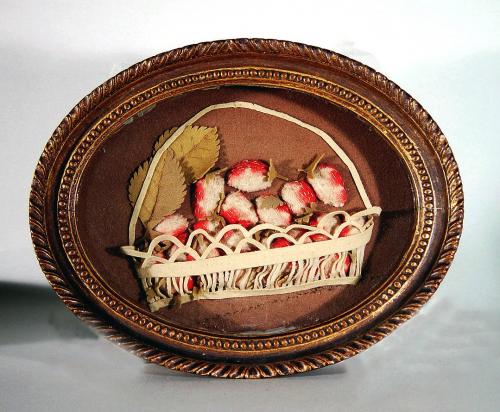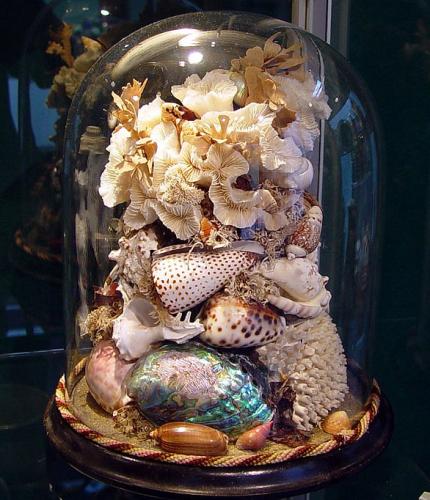
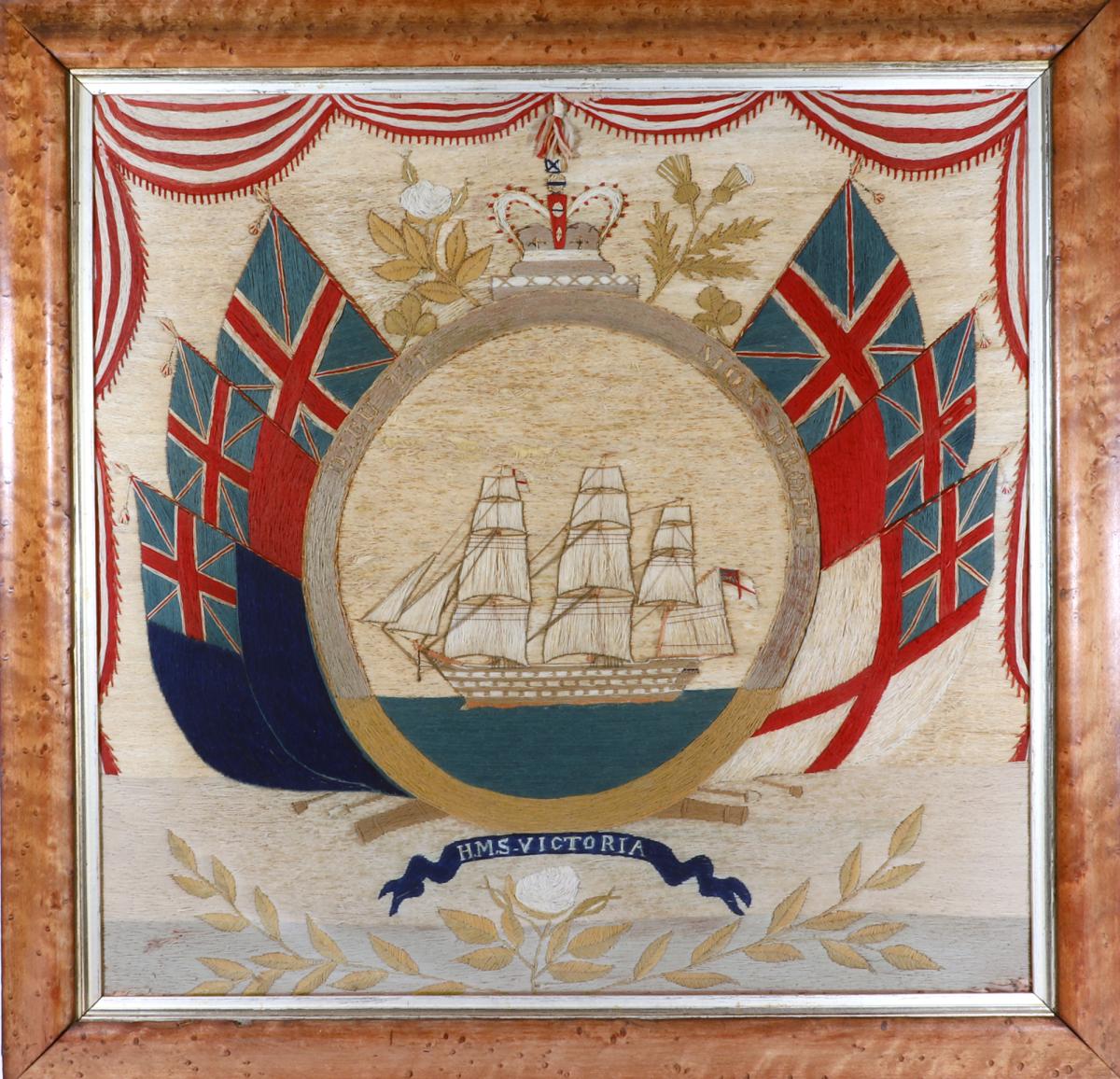
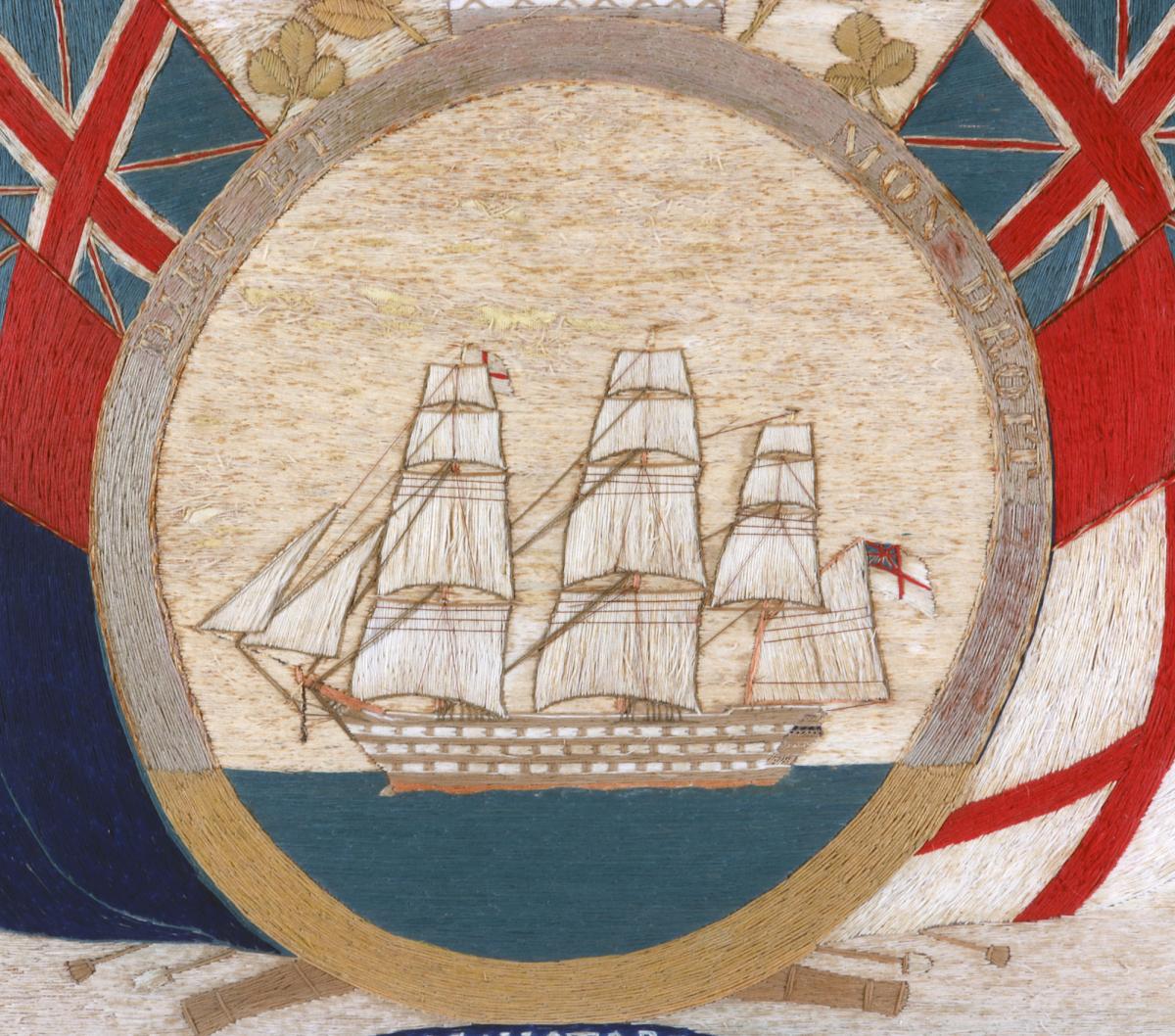
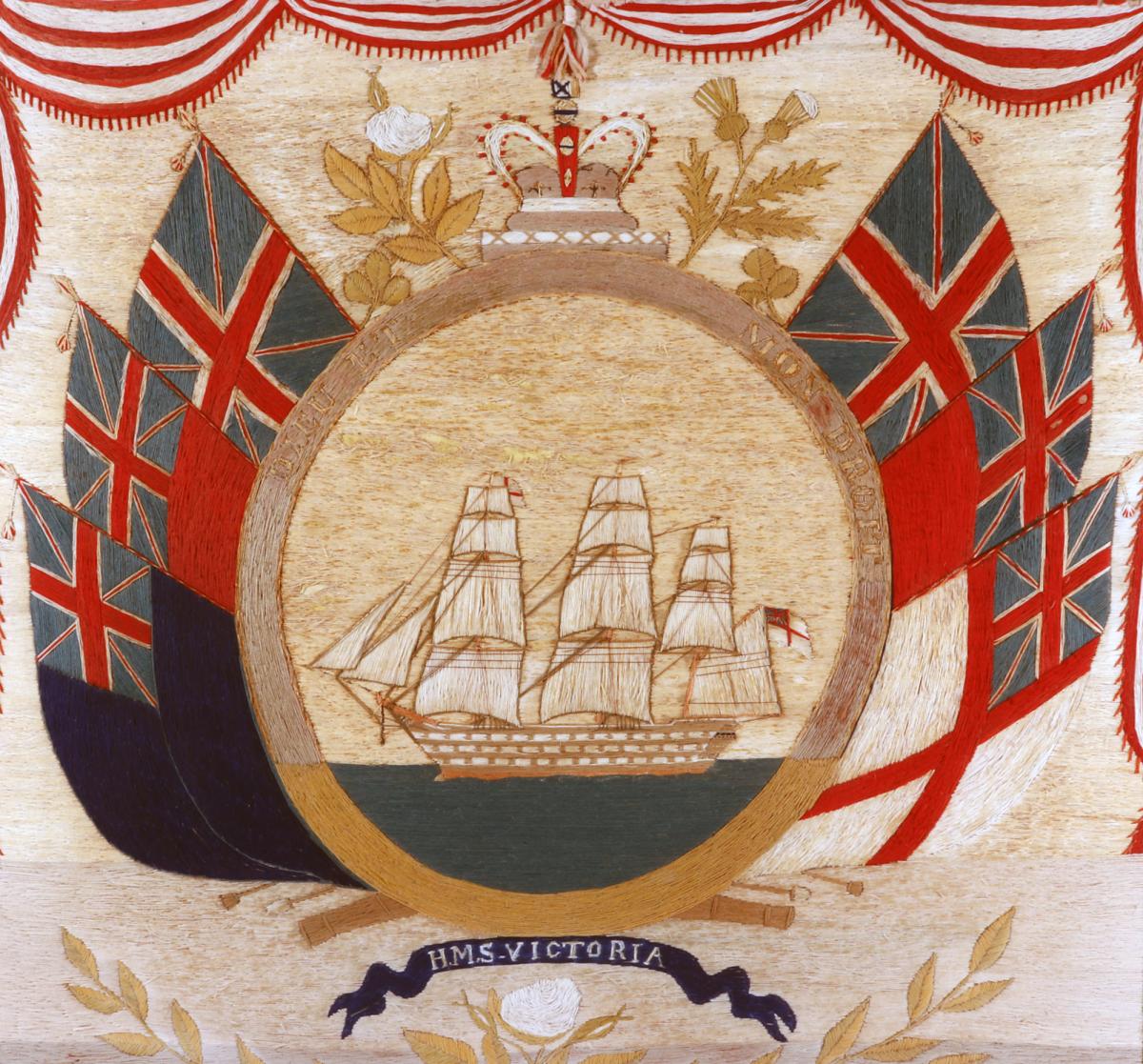
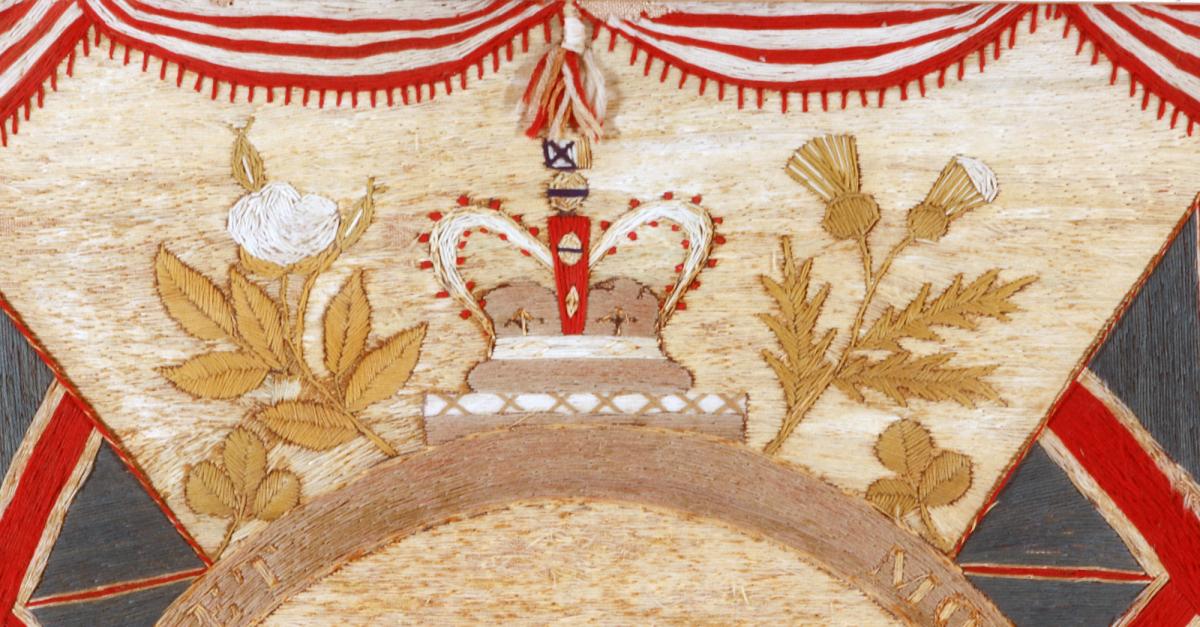
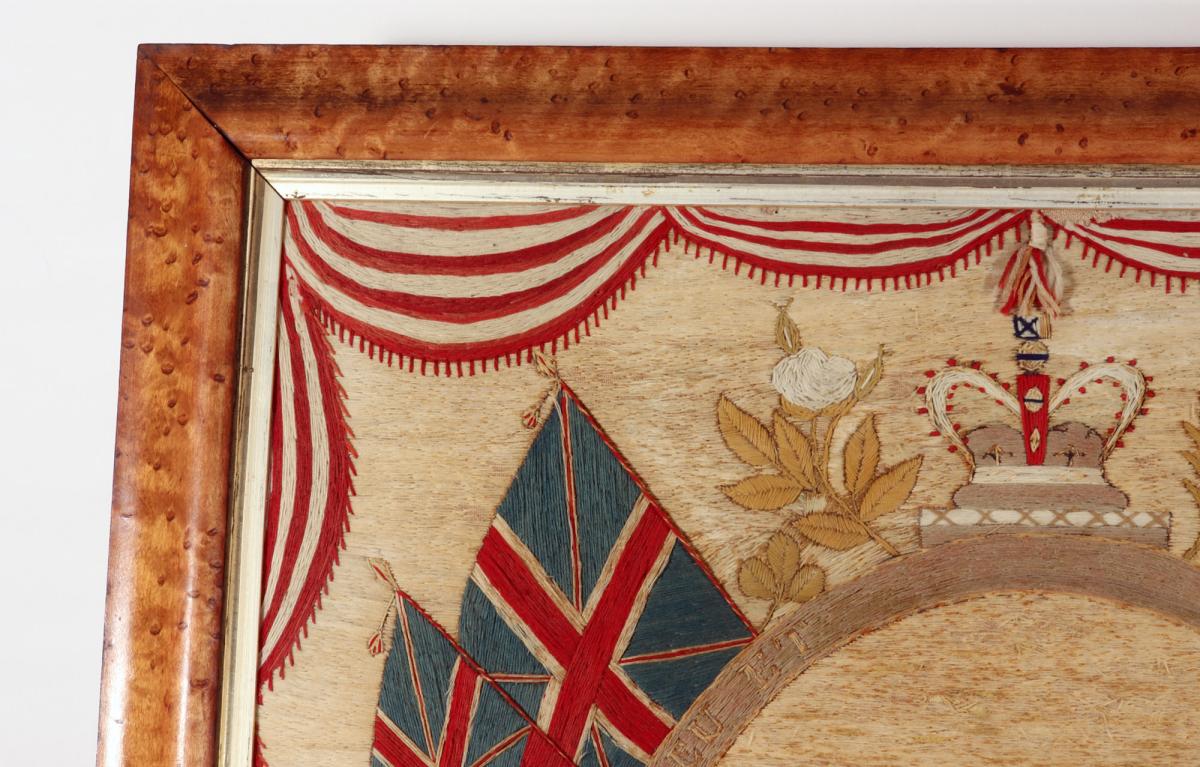
This object is eligible for a Certificate of BADA Provenance
The BADA Standard
- Since 1918, BADA has been the leading association for the antiques and fine art trade
- Members are elected for their knowledge, integrity and quality of stock
- Our clients are protected by BADA’s code of conduct
- Our dealers’ membership is reviewed and renewed annually
- Bada.org is a non-profit site: clients deal directly with members and they pay no hidden fees
British Sailor's Flag of Nations Woolwork of HMS Victoria, Circa 1875.
The large sailor's woolie depicts a portside view of HMS Victoria within a central porthole view which is surmounted with a crown and the white rose of England and the Thistle of Scotland and flanked by three British flags to each side. On the left the Union Jack, the Red Ensign and the Blue Ensign. To the right there is the Union Jack and Red Ensign with the White Ensign to the bottom. This style of flag decoration is known as Flags of Nation style.
Below the porthole is a blue banner reading HMS Victoria while around the porthole border is the motto, "Dieu Et Mon Droit"- "God and my right", (the motto of the British monarch).
Dimensions: Frame: 26 1/4 inches x 27 inches wide x 2 inches deep (Frame: 2 inches wide)
HMS Victoria was the last British wooden first-rate three-decked ship of the line commissioned for sea service.
With a displacement of 6,959 tons, she was the largest wooden battleship which ever entered service. She was also the world's largest warship until the completion of HMS Warrior, Britain's first ironclad battleship, in 1861.
Victoria's hull was 79.2 metres (260 ft) long and 18.3 metres (60 ft) wide. She had a medium draught of 8.4 metres (27.5 ft). Her hull was heavily strapped with diagonal iron riders for extra stability. Victoria was the first British battleship with two funnels.
She was armed with a total of 121 guns (32 8-inch smooth-bore muzzle-loading guns on the lower gun deck, 30 8-inch (200 mm) guns on the central gun deck, 32 32-pounders on the upper gun deck, 26 32-pounders and one 68-pounder on the upper deck).
Victoria was ordered on 6 January 1855, laid down on 1 April 1856 at Portsmouth, and launched on 12 November 1859. She cost a total of £150,578 (equivalent to £11,764,000 in 2010) and had a complement of 1,000.
During trials in Stokes Bay on 5 July 1860 Victoria reached a top speed of 11.797 knots (21.848 km/h),[1] making her the fastest three decker worldwide, along with the French Bretagne. Her Maudslay engine was powered by 8 boilers and developed 4,403 ihp.
After completion Victoria was laid up as part of the reserve fleet at Portsmouth from 1860 to 1864.
She first entered active service on 2 November 1864, when she became Flagship of the Mediterranean fleet under Vice-Admiral Robert Smart and Captain James Graham Goodenough (from 1865: Rear-Admiral Lord Clarence Paget, Captain Alan Henry Gardner). Victoria was based in Malta until 1867 when she returned home. Her armament had been reduced to 102 guns.
Her last public appearance came at the 1867 Spithead Review and she was paid off on 7 August 1867. She became part of the reserve fleet at Portsmouth again, eventually had her armament reduced to 12 guns, and was sold for scrapping on 31 May 1893 without ever having entered service again.
(Ref: NY10205X-air-air)
Dimensions
66.68cm x 68.58cmStock number
NY10205X-airThe BADA Standard
- Since 1918, BADA has been the leading association for the antiques and fine art trade
- Members are elected for their knowledge, integrity and quality of stock
- Our clients are protected by BADA’s code of conduct
- Our dealers’ membership is reviewed and renewed annually
- Bada.org is a non-profit site: clients deal directly with members and they pay no hidden fees


